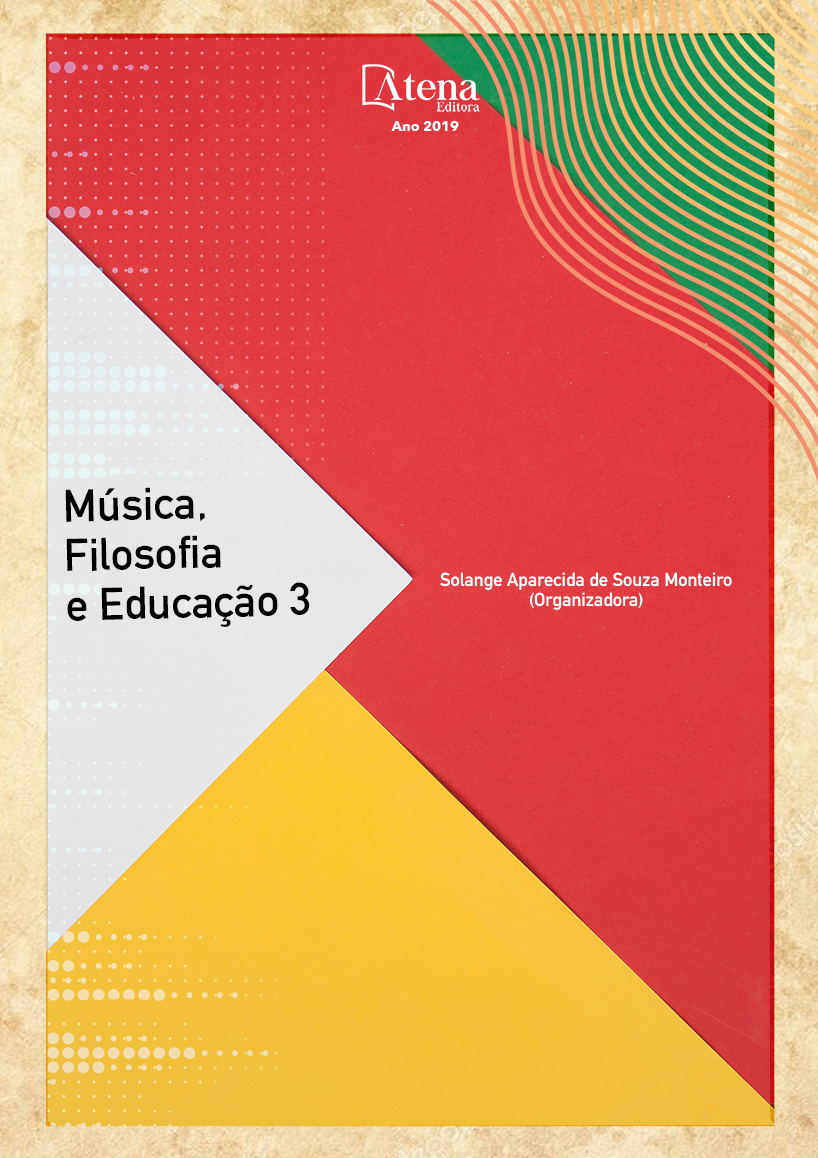
UM MODELO DE SOFTWARE PARA A APRENDIZAGEM À DISTÂNCIA DE EXPRESSIVIDADE MUSICAL IDIOMÁTICA NO JAZZ
Recentes estudos das áreas de
linguística e neurociência (PATEL, 2008;
LIMB, 2008) sugerem que a música possui
características em comum com a linguagem
verbal. Nesse sentido, este trabalho, oriundo
de um projeto de doutorado em andamento
do autor principal, propõe a criação de um
aplicativo para dispositivos móveis (app) para o
ensino da expressividade musical idiomática a
distância na guitarra elétrica ou violão, baseado
em estratégias de aprendizagem da língua
falada e escrita. O aplicativo ou app foi inspirado
nas estratégias de ensino de língua estrangeira
do DUOLINGO e poderá ser desenvolvido
sobre uma plataforma de representação
computacional chamado “Fraseado”
(GONÇALVES, 2017), cujo embasamento
teórico também será tratado neste trabalho.
Acredita-se que, para atender as necessidades
do EaD no Brasil, onde os momentos
presenciais do professor estão gradativamente
deixando de ser obrigatórios, e em países onde
a extensão territorial e as condições financeiras
dos estudantes constituam uma barreira para
os estudos, o desenvolvimento deste projeto
pode ser um excelente recurso para atender
os alunos de forma remota, automática e nãosupervisionada
UM MODELO DE SOFTWARE PARA A APRENDIZAGEM À DISTÂNCIA DE EXPRESSIVIDADE MUSICAL IDIOMÁTICA NO JAZZ
-
DOI: 10.22533/at.ed.0601904028
-
Palavras-chave: Expressividade Musical Idiomática; Ensino a Distância; Conhecimentos Declarativo e Processual; software musical.
-
Keywords: Expressive Musical Expression; Distance learning; Declarative and Procedural Knowledge; music software.
-
Abstract:
Recent studies in the areas
of linguistics and neuroscience (PATEL,
2008; LIMB, 2008) suggest that music has
characteristics in common with verbal language.
In this sense, this work, coming from an ongoing
doctoral project, proposes the creation of an app
for mobile devices (app) to teach the idiomatic
distance musical expression on electric guitar
or guitar, based on learning strategies of the
language spoken and written. The application
or app was inspired by the strategies of foreign
language teaching of the DUOLINGO and
could be developed on a platform of computer
representation called “Phrased” (GONÇALVES,
2017), whose theoretical background will also
be dealt with in this work. It is believed that, in
order to meet the needs of EaD in Brazil, where
face-to-face moments are gradually no longer
mandatory, and in countries where the territorial
extension and financial conditions of students
constitute a barrier to studies, the development
of this project may be an excellent resource to attend students remotely, automatically and mainly unsupervised.
-
Número de páginas: 15
- Endre Solti


